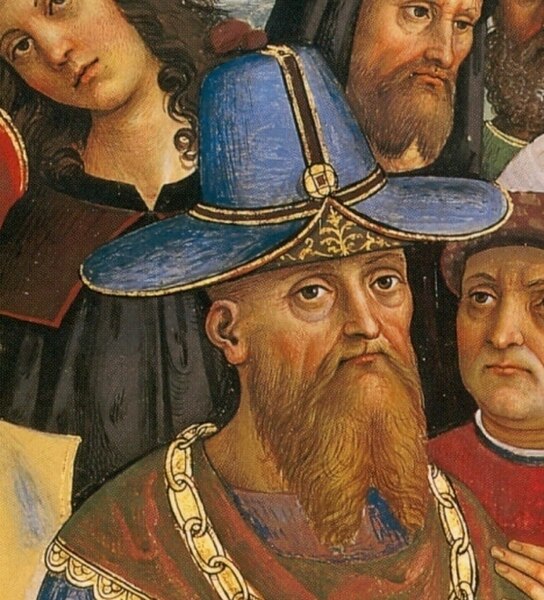Andreas Palaiologos, sometimes anglicized to Andrew Palaeologus, was the eldest son of Thomas Palaiologos, Despot of the Morea. Thomas was a brother of Constantine XI Palaiologos, the final Byzantine emperor. After his father's death in 1465, Andreas was recognized as the titular Despot of the Morea and from 1483 onwards, he also claimed the title "Emperor of Constantinople".
Contemporary painting of Charles VIII of France
The French troops and artillery of Charles VIII entering Naples in 1495
Thomas Palaiologos was Despot of the Morea from 1428 until the fall of the despotate in 1460, although he continued to claim the title until his death five years later. He was the younger brother of Constantine XI Palaiologos, the final Byzantine emperor. Thomas was appointed as Despot of the Morea by his oldest brother, Emperor John VIII Palaiologos, in 1428, joining his two brothers and other despots Theodore and Constantine, already governing the Morea. Though Theodore proved reluctant to cooperate with his brothers, Thomas and Constantine successfully worked to strengthen the despotate and expand its borders. In 1432, Thomas brought the remaining territories of the Latin Principality of Achaea, established during the Fourth Crusade more than two hundred years earlier, into Byzantine hands by marrying Catherine Zaccaria, heiress to the principality.
Thomas, detail from the Pintoricchio fresco of Pius II's arrival at Ancona, in the Siena Cathedral
Miniature from an early 15th-century manuscript depicting Thomas's father Emperor Manuel II Palaiologos, his mother Helena Dragaš and his three oldest brothers John (later Emperor John VIII), Theodore and Andronikos
Ruins of the Hexamilion wall, restored by Thomas and his brother Constantine to defend the Morea in 1444 and destroyed by the Ottomans in 1446
John Argyropoulos, sent as an envoy to the West by Thomas in 1456






